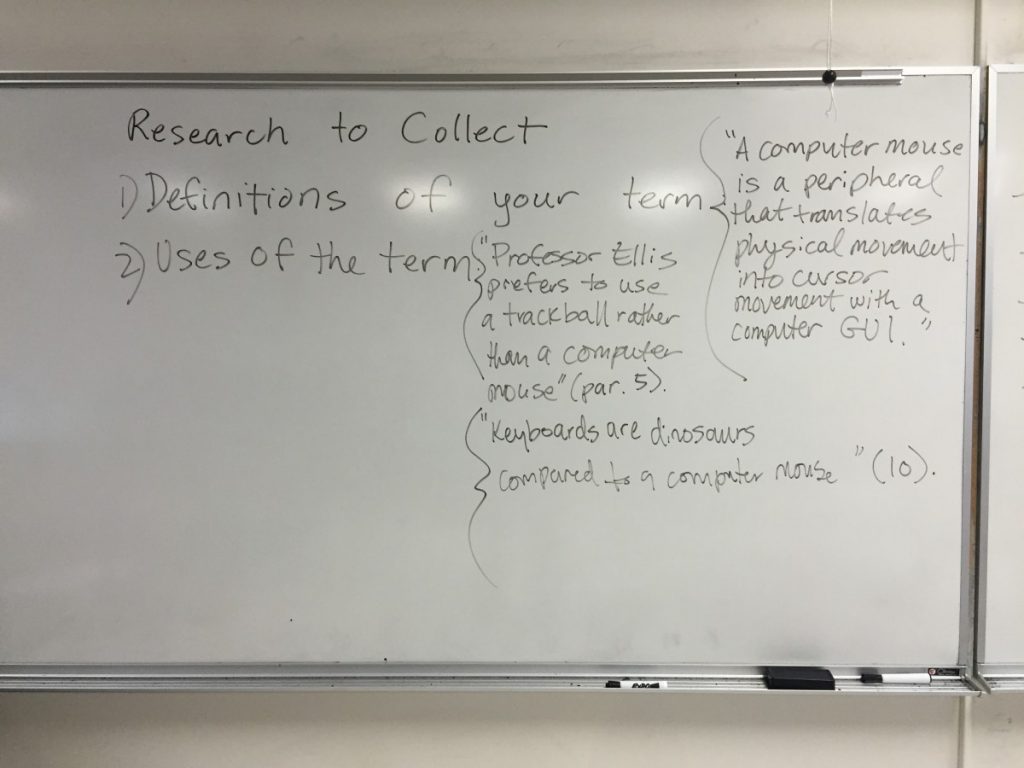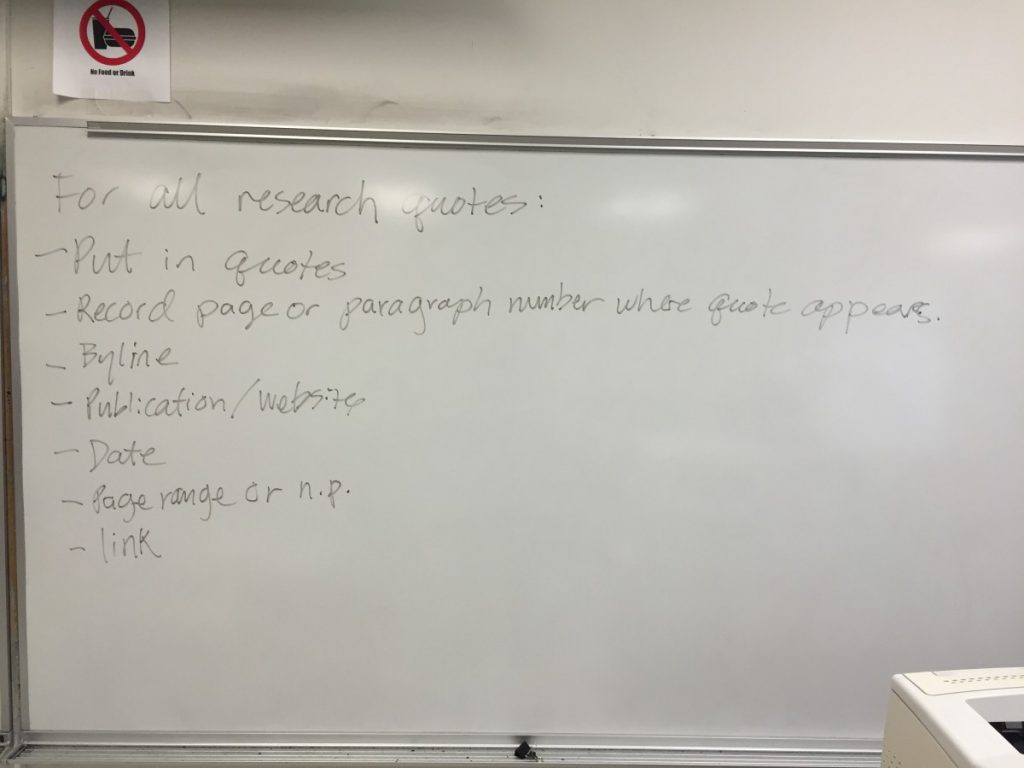The next project that we will be developing in class is the 750-1000 word expanded definition. This document should define a term that is important to your studies and future career. It should be something that you are interested in and passionate about. From the syllabus, the assignment is:
Individually, you will write a 750-1000 word expanded definition of a technical or scientific term, with cover memo, which demonstrates: 1. correct memorandum format. 2. knowledge of the etymology and historical development of the term. 3. examples of the term’s use in various written contexts. 4. ability to compare and contrast various uses of the term. 5. use and citation of sources with proper attribution. 6. awareness of audience. At least three library-sourced citations are required and should be cited following APA format.
During today’s class, let’s focus more on what you already know about the term that you’ve selected, researching the term as defined by others, and the use of the term in various publications. Create a new document for your expanded definition. In your own words, define the term that you are writing about. Then, read about your term on Wikipedia–paying attention to the kinds of information/structure of the Wikipedia article devoted to your term, and focus on the references section of the Wikipedia article for possible sources in your further research. Remember, Wikipedia is a good research for beginning research, but it is not a resource for the purposes of our project that should be quoted or cited. Finally, locate sources that define your selected term–copy quotations and document all bibliographic information into the document that you created earlier. The more quotations of definitions and uses of the term that you can find, the more material that you will access to in writing the content of your expanded definition document.
A final note: think about what kinds of images of the term that you can incorporate into your document. For example, if you are writing about cloud computing, you could take a photo of a line of servers. Be creative and experimental. Again, it’s better to try out a lot of ideas and discard the ones that don’t work instead of trying only one thing.






